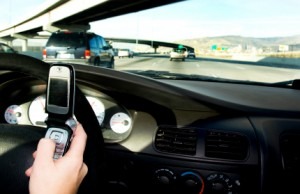In a recent year, the National Highway Traffic Safety Administration recorded 3,142 distracted driving-related fatalities in the United States. These incidents are tragically common, and what's more, a distracted driving-related death can occur […]
For this reason, state and federal governments have worked to decrease the number of teens who die each year in car crashes. Since the mid-90’s they have been largely successful, but now new information has come to light.
Preliminary data for teen deaths in car crashes for the first six months of 2011 showed a disturbing new trend. For the first time in 8 years, the number of teen deaths isn’t decreasing; it’s increasing. The first six months have showed an 11% increase in teen fatalities from 190 to 211 deaths. The increase has not been uniform across the country. Some states have stayed the same or even seen a decrease in deaths, but it is the overall percentage increase and the fact that the adult fatalities have simultaneously decreased that concerns officials.
No one is quite sure yet what’s causing the increase. There are several different theories and it may be that it’s a combination of different factors. We’ll know more after the data for the second half of 2011 is collected.
There may actually be a downside to the economy getting stronger. Now that families are doing better and gas prices aren’t as high as they were in 2008, it’s more affordable for teens to drive recreationally. More teens on the road have unfortunately created more fatal incidents.
GDLs are state programs that give new drivers only certain privileges and often require potential drivers to have more experience before earning their license. In most states, a potential driver might have to have a permit for at least 6 months. Other common restrictions include not having any other teens in the car and having a curfew at night for the first 6 months or even 1 year after receiving a license.
Now that GDL programs are common throughout the country and are being reinforced on a regular basis, researchers are wondering if the downward trend is finally leveling off. Have we gotten all the benefits we can from GDLs?

Distracted driving has increased for all drivers. After all, with iPhones and GPSs there are more devices than ever to take a driver’s attention off the road. The National Transportation and Safety Board has already called for a national ban on cell phone use (even with hands off devices) while driving a vehicle.
Across the country organizations, politicians and citizens are working to make a difference.
The Governor’s Highway Safety Association (GHSA), the organization who first compiled the research on the increase in teen driving fatalities, is looking to Congress to help combat this national problem.
In the past, the federal government has been instrumental in offering states incentives to pass new laws that would increase teen safety. Focusing on efforts to institute GDLs and prevent drunk driving.
After Federal guidelines and bills, it’s up to the car manufactures to institute change. Change will be based on what is called a “2-second rule.” The idea is that any task that takes a driver more than 2 seconds to do or can’t be completed in brief 2-second intervals shouldn’t be allowed.
On the more local level, state officials and citizens can help to cut down on the big factors involved in teen crashes: driving at night, distracted driving, driving while under the influence and lack of seat belt use.
Texas has the highest number of fatal teen crashes in the country. In the first six months of 2010 alone there were 22 deaths. Compare that to the second highest number at 11 in North Carolina. Look at safety education materials on Texas Department of Transportation’s web page or at Teens in the Driver’s Seat for more info on how to promote safety. Remember, if you or teen driver have been involved in an accident, contact a Dallas car accident attorney discuss your legal options.
Note: The information that was utilized in this post was gathered from the use of secondary sources. This information used has not been confirmed or independently verified. If you locate any information that is not correct, please contact our firm as soon as possible so that we can make the appropriate corrections. If you find any information that is false, we will remove or correct the post immediately after it is brought to our attention.
Disclaimer: As a valued member of the Dallas community, Rasansky Law Firm’s goal is to improve the safety of all residents in the great state of Texas. These posts should not be viewed as a solicitation for business and the information included herein should not be taken as medical or legal advice. The photos used in this post are not representative of the actual crash scene.
Over 30+ Years Of Personal Injury Experience
Top-Rated and Award-Winning Personal Injury Lawyers
Attorneys Available to Discuss Your Case Now
No Fee Unless You Win
Free Confidential Consultation.
Fill out the form below to receive a free and confidential initial consultation with an experienced personal injury lawyer.